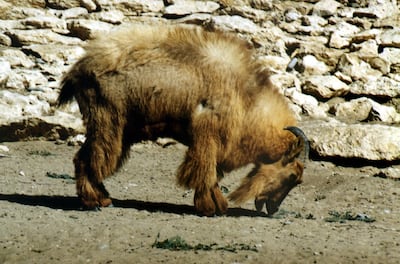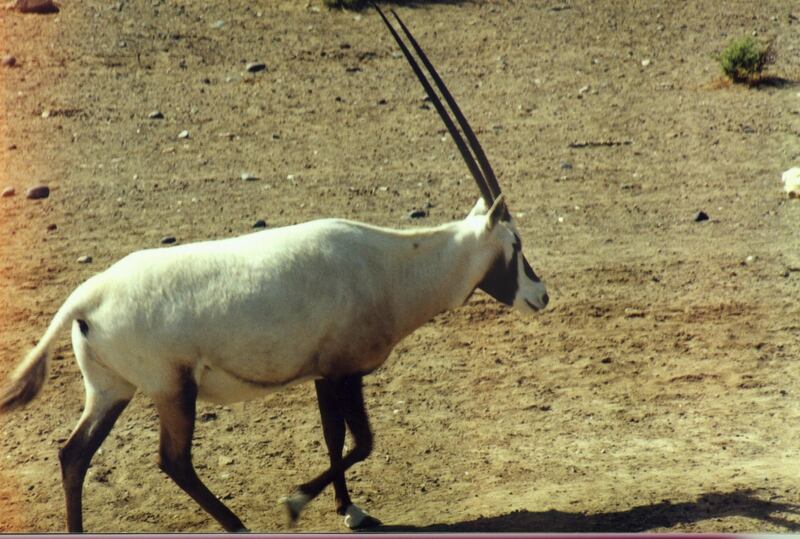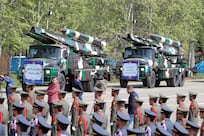Hamed Al Marzooki lifted an Arabian gazelle calf from the seat of his four-wheel drive and placed it in an enclosure at the back of his house. The calf had an injured leg. Not only that, but it was alone and defenceless after its mother was shot by poachers.
As a ranger with Oman's Environmental Office for the Preservation of Protected Animals, it has fallen to Mr Al Marzooki, 48, to nurse the calf back to health and then release it into the government’s protected Al Kamil Wal Wafi park in the eastern region.
The 220-square-kilometre park is home not only to gazelles, but also to red foxes, wildcats, oryx, eagles and wild goats. Oman has five more of these protected parks around the country but it is losing the battle to protect wild animals because of poaching and now the development of housing estates for low income citizens close to parkland.
"Every year these animals go down in number. Poaching is a known problem but now the government is building new housing estates close to the protected areas where these animals live," Mr Al Marzooki told The National.
------------------------------------
Read more:
[ Oman chooses oil over the oryx ]
[ Should rhino and tiger poachers be shot? Debate rages in India ]
[ Life remains a struggle for the Arabian oryx ]
------------------------------------
He said road traffic close to the parks had increased as a result of these housing developments, leading to a rise in the number of animals being run down. Residents of the housing estates were also trapping animals to sell them off as pets to city dwellers, he added. All that comes on top of poachers who shoot them for their meat and skin.
This year so far, 21 endangered animals have either been killed on the roads or found in the possession of poachers, according to figures from the official Oman News Agency. Many more missing animals remain unaccounted for, however, with poachers not always caught by police.
In 1972, Sultan Qaboos bin Said, the ruler of Oman, ordered the protection of endangered species, establishing the six protected parks and allocating funds for their upkeep and the employment of wildlife rangers. Rangers are mainly local people like Mr Al Marzooki who were born near the animal reservations.
Khalid Al Zabanoot, a ranger in a protected park in the southern region of Dhofar, shoots in the air with his rifle to scare away poachers when they are within range. He said the same “trick” works for the residents of the housing estates recently built near the reservation he looks after.
“Shooting in the air to scare away residents looking for cubs and calves make me unpopular. They report me to the local police but the authorities know I am doing my job," he said.
"Rich people in the cities pay big money for the gazelle, oryx or the tahr (wild goat). They have their own private zoos there for their own enjoyment," Mr Al Zabanoot said.

The Tahr weighs up to 100 kilograms and is much bigger in size than the farm goat. It is much sought after by rich families who traditionally slaughter it during the Eid feasts or for lavish weddings as a symbol of wealth.
"A poacher can sell a fully grown tahr for up to 450 [Omani] rials (Dh4,275). A calf is expected to fetch 350 rials (Dh3,325) because of its tender meat. They are very elusive, therefore difficult to hunt and that's why they are expensive," said Ahmed Al Hassani, who lives close to Al Kamil Wal Wafi park.
In comparison, a normal goat weighing about 25kg costs a typical 60 rials and its calf about 35 rials.
Mr Al Hassani said a live gazelle, meanwhile, would fetch a typical 2,750 rials and a calf even more if sold to wealthy people with private zoos.
“If you have a live Arabian oryx shot with a tranquilliser gun by poachers than you can sell it for up to 75,000 rials to a foreign dealer who will then sell it on the black market to a private zoo abroad,” Mr Al Hassani added.
Environmental experts say the government has lost its way on the issue of protecting wild animals whose numbers have been dwindling to near extinction level.
“These animals are disappearing very fast. The most prized protected animal, the Arabian oryx, is on the verge of extinction. I don’t think authorities realise that this animal is a national treasure,” said Ibrahim Al Ghammari, a wildlife campaigner.
In June 2007, Oman’s Arabian Oryx Sanctuary (AOS) became the first site to be removed from Unesco's World Heritage list after the number of animals living there fell significantly due to poaching and the size of the protected area was reduced by 90 per cent as the government took away land for hydrocarbon projects and housing estates.
The AOS is now just 2,800 square kilometres in size, down from its original size of 27,500 square kilometres.
Long periods of drought coupled with economic reforms and speedy modernisation have also taken their toll on endangered species populations in Oman.
“These factors show that Oman is now choosing modernisation and economic transformation over these animals. It is sad that eventually we are going to see the end of these beautiful wild animals because many don’t see them as important to the country,” said Mr Al Ghammari.





